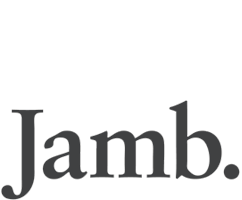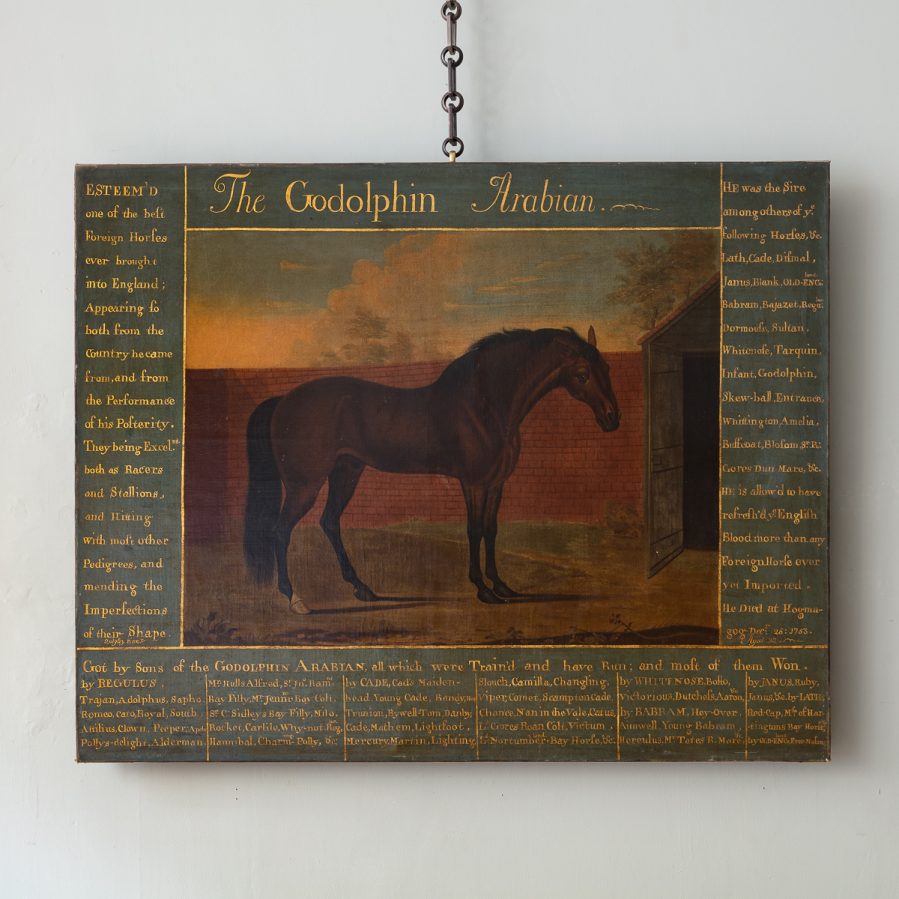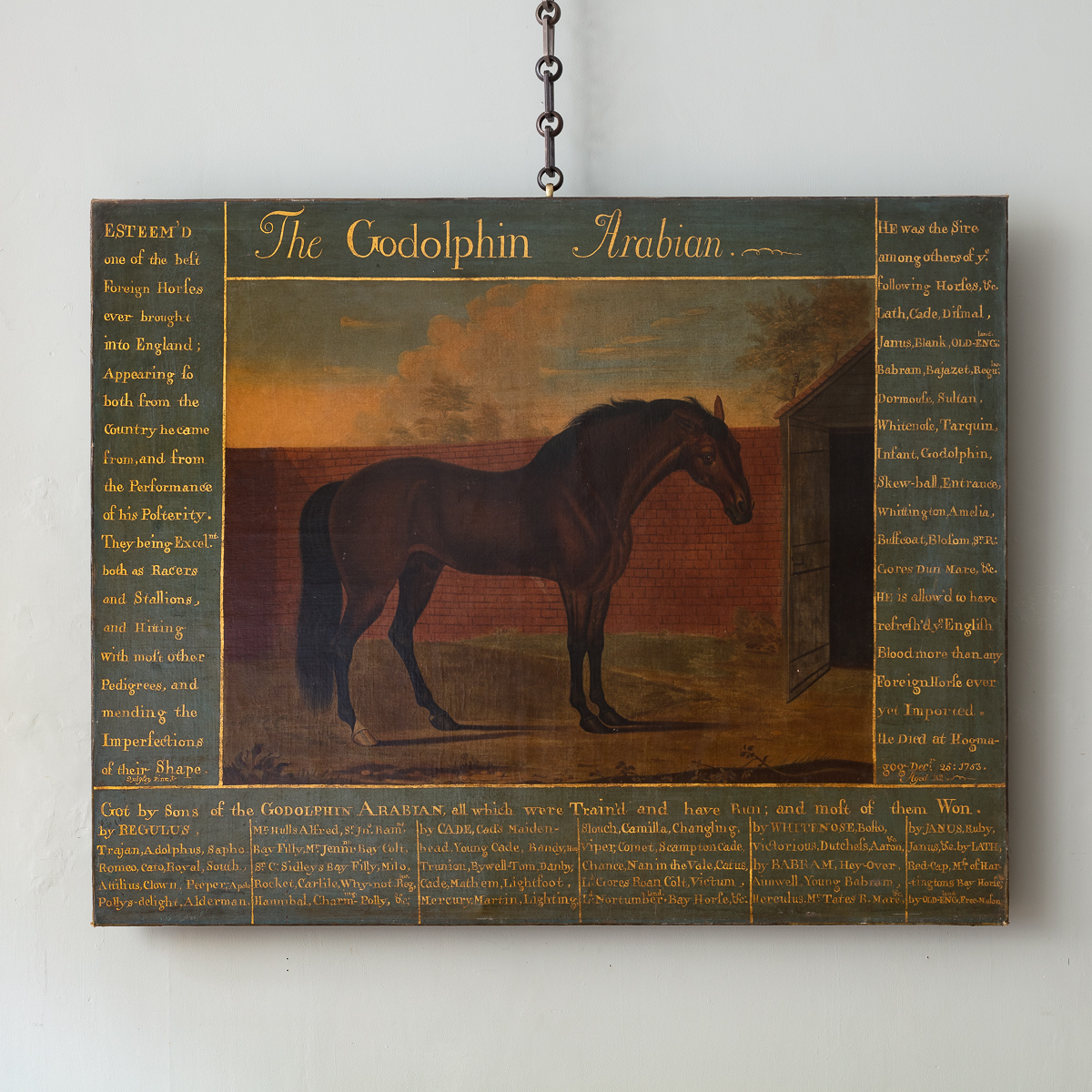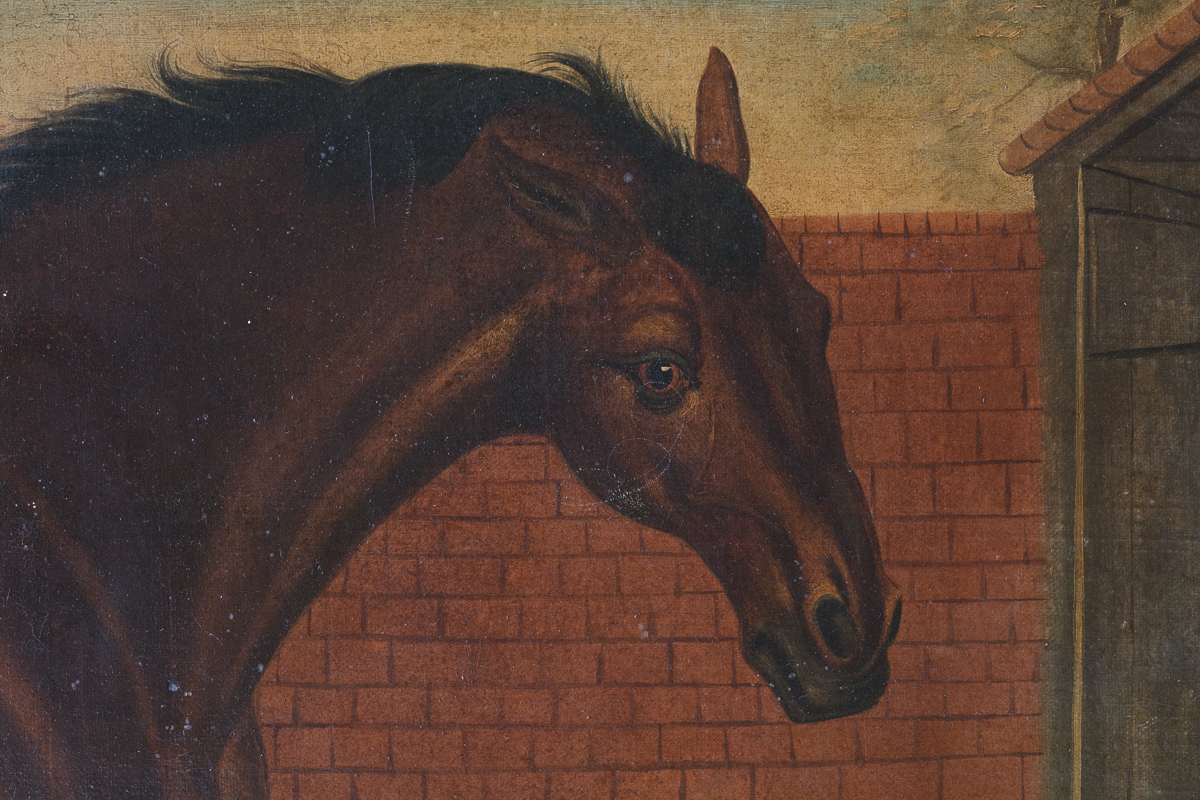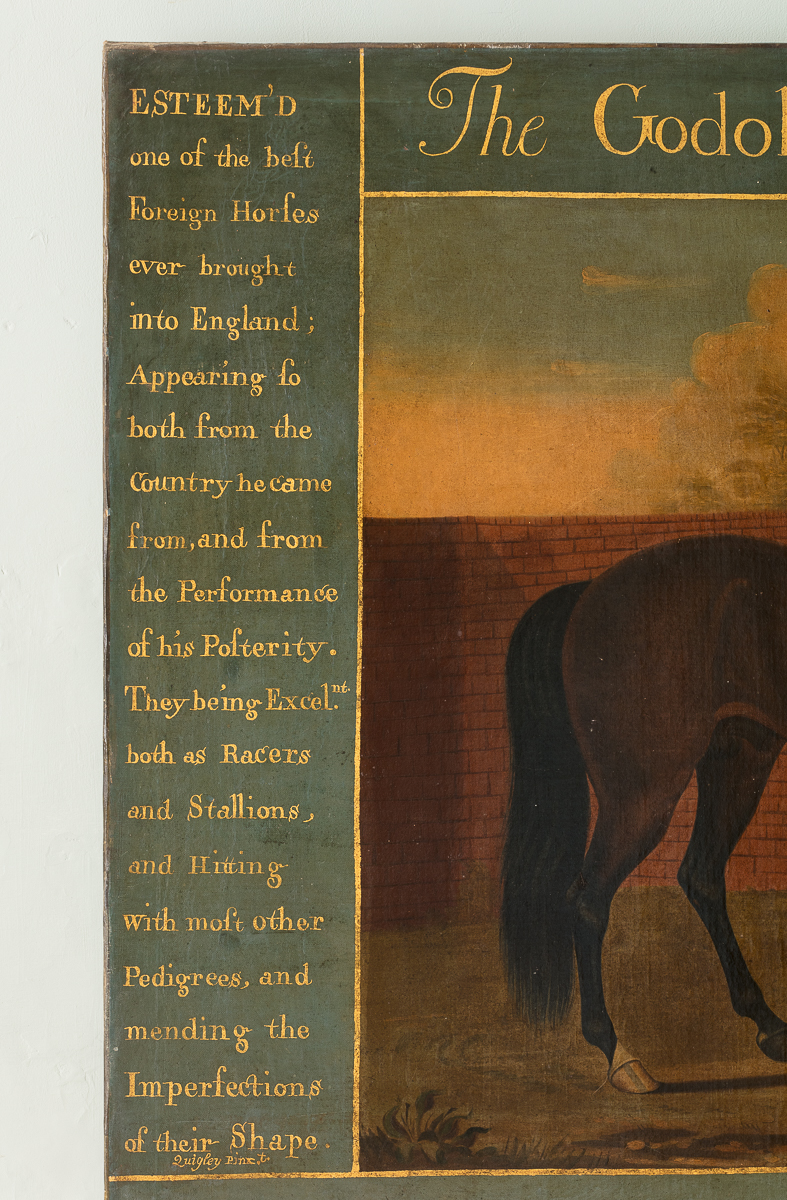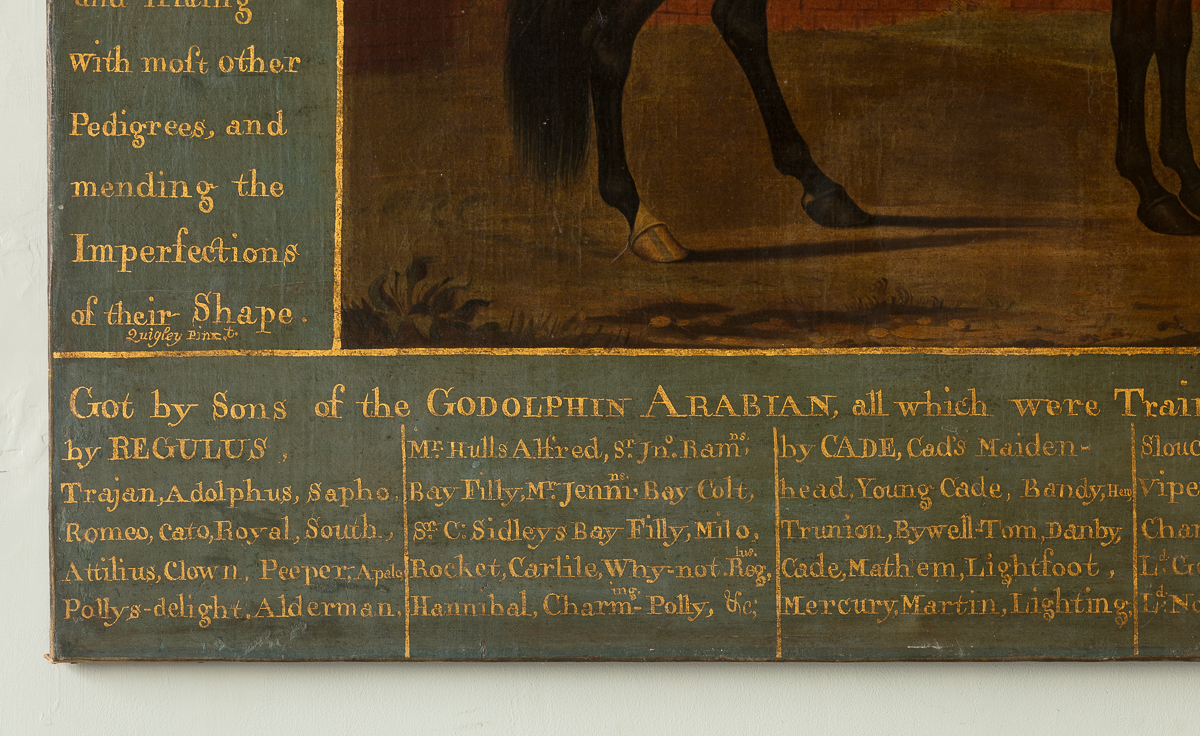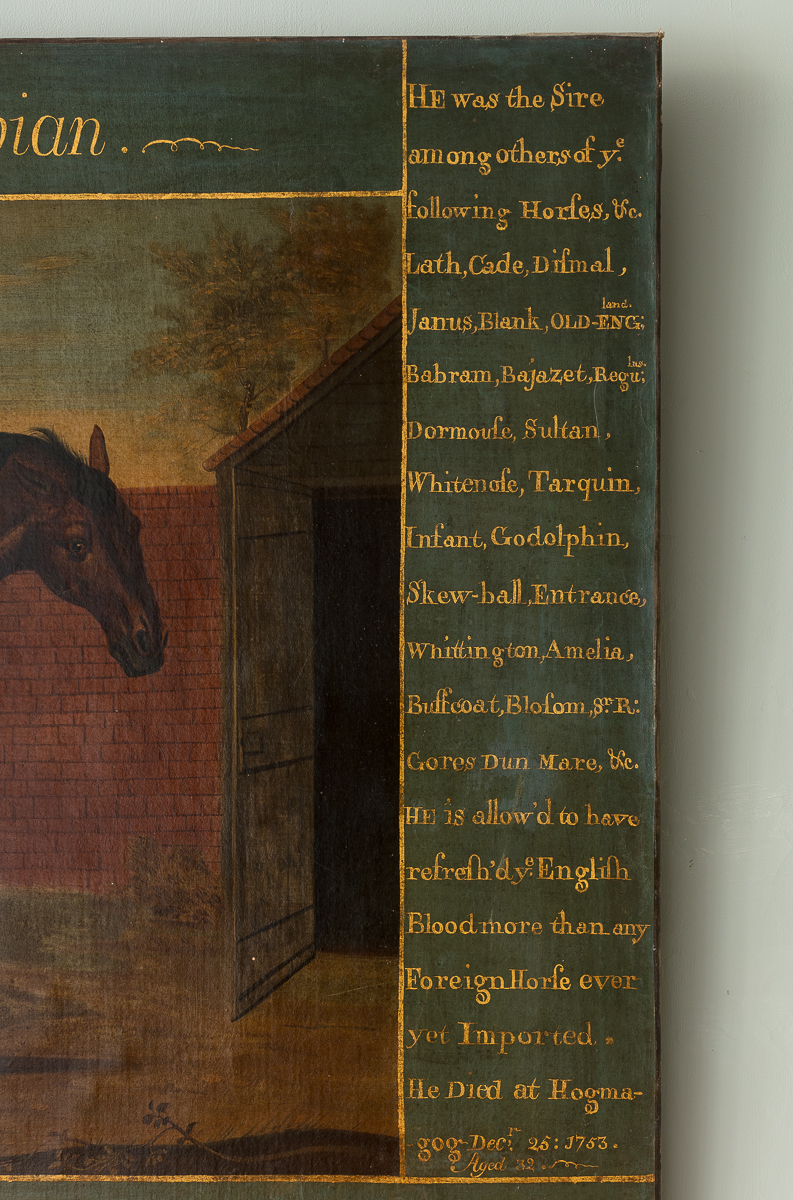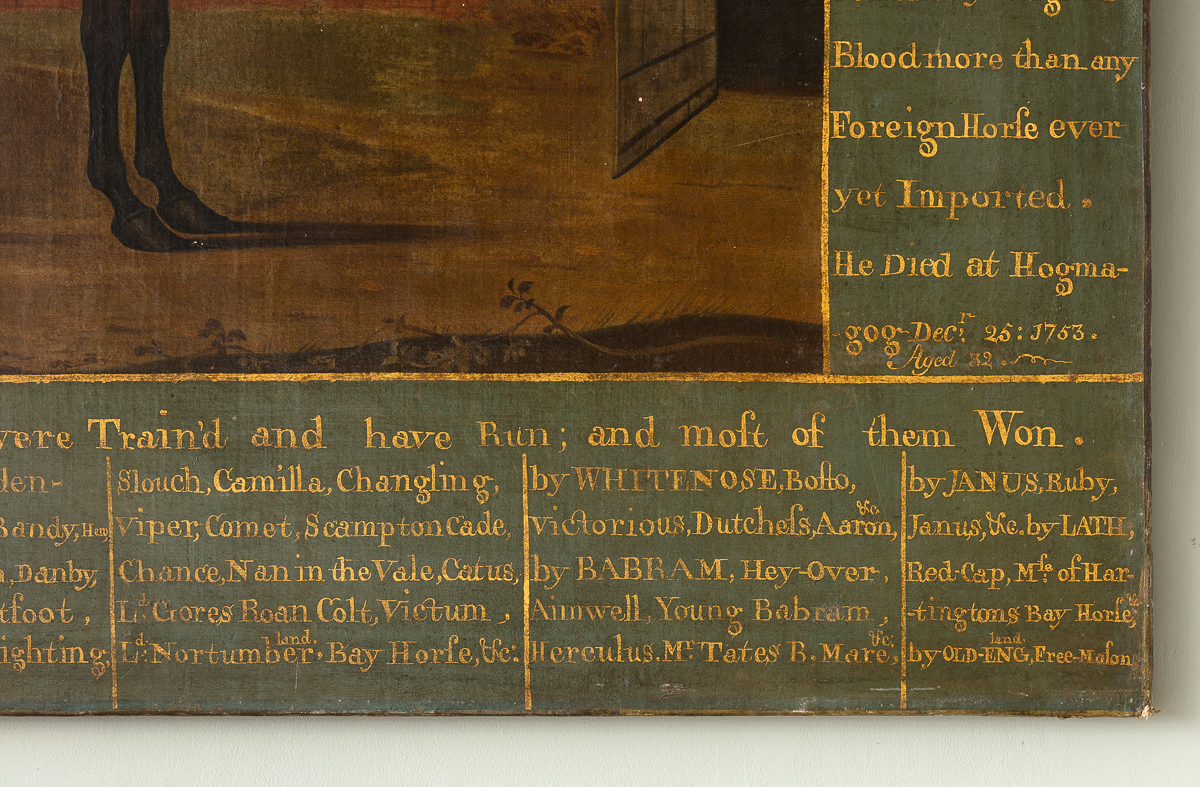A Mid-18th Century Oil on Canvas Depicting the Godolphin Arabian, by Daniel Quigley
One of four known depictions of the Godolphin Arabian by the Irish painter Daniel Quigley (Active 1750-1778), this exceptional oil on canvas shows the champion sire of 1738, 1745 and 1747, a key contributor to the bloodline of the English Thoroughbred, in profile, head turned slightly to dexter and looking at the viewer, in the yard at Wandlebury, where he died in 1753. The border recounts, in wonderful gilt lettering, the offspring of the Godolphin Arabian, and, in the lower left hand side, the artist’s mark, ‘Quigley Pinxit’, or ‘Quigley Painted [Me]’. Several renderings of this renowned horse exist, including the only known painting from life, by David Morier, in Houghton Hall, and works after this original by Stubbs, printmaker John Faber, and Quigley.
Notes on the artist:
It is remarkable how very few horse paintings of Irish origin from the eighteenth century are now known, and able to be attributed with certainty; the only Irish sporting artist from this period that we have a number of paintings attributed to, was Daniel Quigley. A primitive painter, his dates are uncertain, working closely in the Seymour tradition – setting his horses, figures and carriages in a friezelike composition in front of nearly treeless landscapes. Quigley’s painting The Match between Mr Walpole’s ‘Paoli’ and Mr O’Neill’s ‘Hero’ on the Curragh is dated 1764, but an earlier work, known in various versions, is The Famous Carriage Match Between Lord March and Lord Eglinton, which took place in 1750. This is a version of a Seymour, now in the British Art Centre, Yale. There is more literature to be read around this subject in Anne Crookshank and the Knight of Glin, The Painters of Ireland c.1660-1920, 1978.
Another version of Quigley’s ‘Godolphin Arabian’ is in the National Horseracing Museum, Newmarket.
Height: 110cm, 43 1/3″
Width: 126cm, 49 2/3″
£95,000
